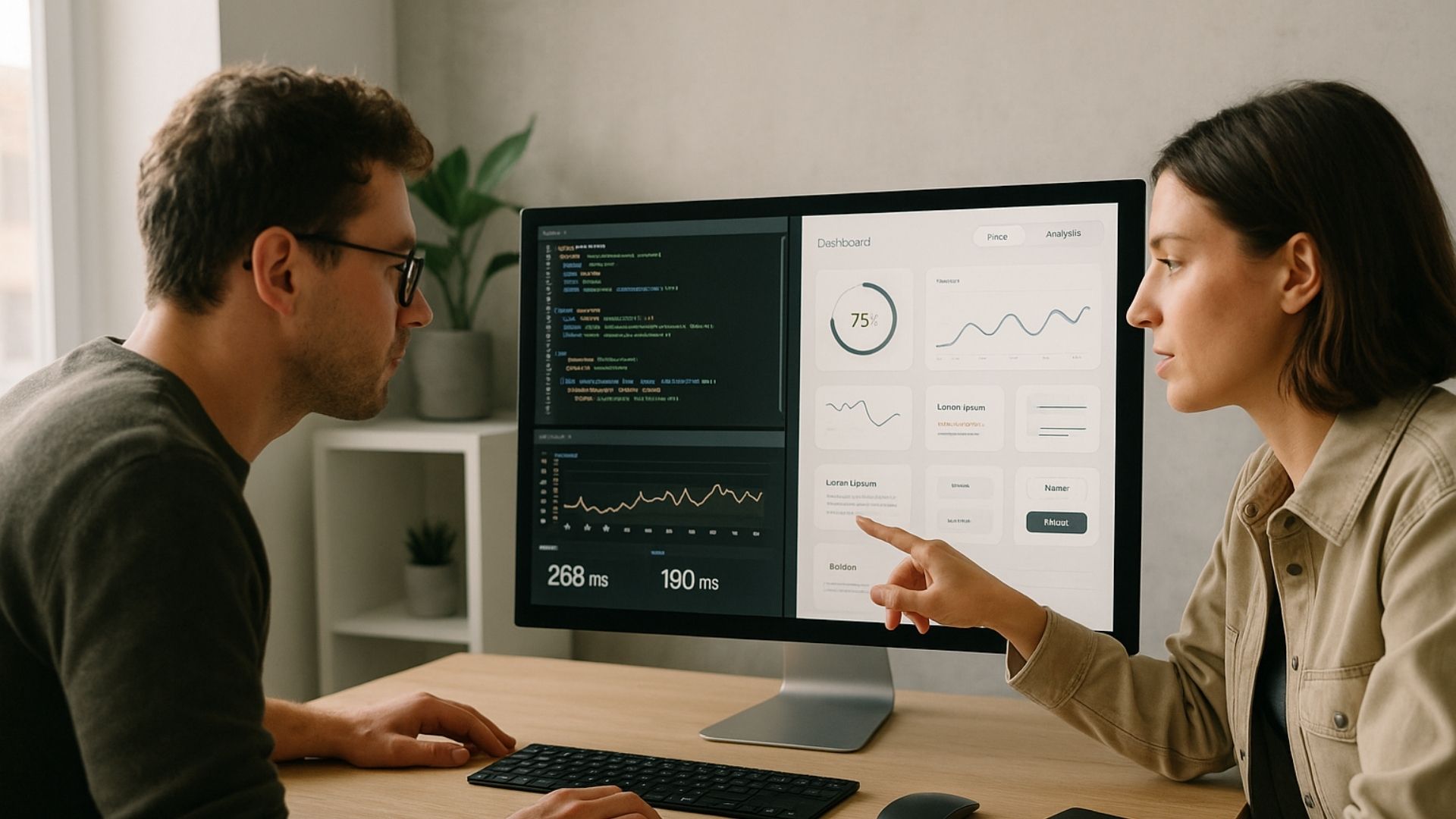
Frontend Development: Balancing Speed and Design
July 17, 2025 - 3 min readHow to Balance Speed and Design in Frontend Development
In today’s digital world, users’ attention spans are limited to mere seconds. This pushes frontend developers to build interfaces that are both visually engaging and lightning-fast. However, these two priorities are often seen as conflicting. In this blog, we explore how to maintain design quality without sacrificing performance.
Why Is a Fast Interface Critically Important?
Slow-loading pages can cost you users. According to Google, increasing load time from 1 to 3 seconds raises bounce rates by 32%. Beyond that, metrics like Core Web Vitals directly impact your SEO rankings.*
High-performance front ends ensure:
- Low page load times,
- Fast interaction response,
- Optimized use of media and scripts.
How Important Is Visual Aesthetics?
Well-designed interfaces create a sense of professionalism, enhance brand value, and foster user loyalty. Poor design, on the other hand, can quickly drive users away.
Design should:
- Instill trust,
- Align with your brand language,
- Be user-friendly and accessible.
How to Balance Speed and Design?
You can achieve this balance with a combination of technical and design optimizations:
- Lazy Loading: Load content only when needed to boost speed.
- Code Splitting: Use modular page-level code in frameworks like React.
- Optimized Images: Use WebP format and responsive images.
- Design Systems: Enhance efficiency and consistency with reusable UI components.
Frequently Asked Questions
1. Can animations be used without compromising performance?
Yes. When using CSS-based animations or lightweight formats like Lottie, you can create engaging yet fast experiences.
2. Do design systems affect frontend speed?
Positively. Reusable components improve both development efficiency and load performance.
3. What are Core Web Vitals?
They are Google’s page experience metrics: LCP, FID, and CLS.
4. What design elements slow down websites?
Heavy JS files, unoptimized images, and excessive fonts are major contributors.
Conclusion
In frontend development, the outdated notion of choosing between speed and design is being replaced by the goal of achieving both. If you want fast, beautiful, and user-friendly interfaces, get in touch with theMomentup team.